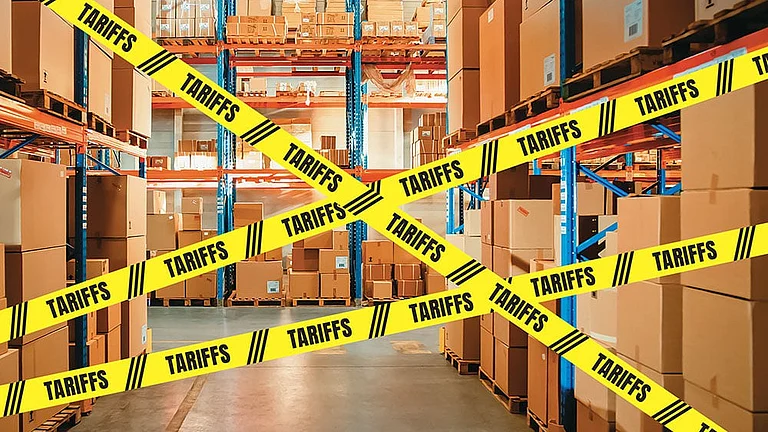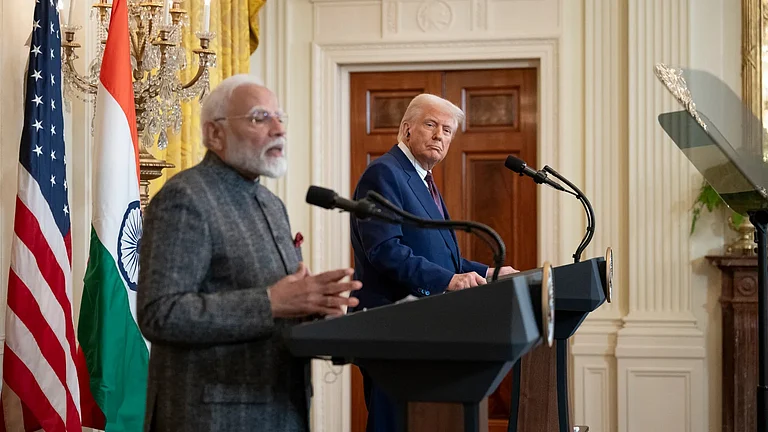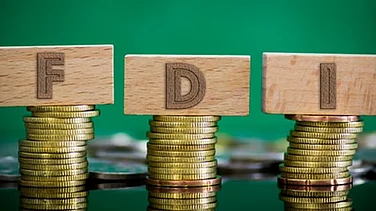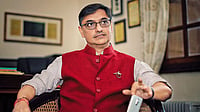Exporters expect the government to take care of the import duties and provide additional support in case the newly elected US President Donald Trump slashes heavy import duties on Indian goods. Since Donald Trump won the US Presidential Elections, the fear of heavy tariffs has been persistent among several countries. Trump has not only threatened to impose reciprocal tariffs if India continues to levy high taxes on American goods but also warned countries who are advocating for de-dollarisation.
While there has been a lot of speculations around the tariff structure to be finalized by the USA, the Ministry of Commerce is reaching out to various industries to get an understanding of how they see trade with the US and the possible impact of announcements that Trump has made so far.
“We have sought their input to evaluate the issues and their offensive interests,” a media report quoted Ministry of Commerce.
Trade experts stated that Indian exporters may face high customs duties for goods such as automobiles, textiles, and pharmaceuticals if the new US administration decides to pursue the 'America First' agenda.
Minimising Import Duties
Right after Donald Trump came to power, he threatened several countries with heavy tariffs, with China being the main target. Trump seems to hate deficit and the countries having a high trade deficit with the USA are likely to be the most targeted ones. While India is not among the top exporters to the USA, the threat lies elsewhere.
Trump has also threatened to impose heavy tariffs on countries that are advocating for de-dollarisation. And India has always remained very vocal about it. In recent years, India has been doing trades with the Indian Rupee with countries like Russia, UAE, etc. At such a time, when the country is not completely out of the radar of the USA, the exporters, especially those from the medium and small enterprises expect the Indian government to take special care of the import duties.
“Considering the kind of political bonding our Ministers have with the Trump regime; we believe that India will take care of the import duties. At the same time, the Indian exporters need to grab this opportunity to explore the US market,” said Neeraj Singhal, National President of the Indian Industries Association (IIA).
During the April-October period in the current fiscal year, the country's exports to America rose 6.31 per cent to $47.24 billion, while imports grew 2.46 per cent to $26 billion.
Federation of Indian Export Organisations (FIEO) has also formulated a strategy to boost India's exports to America, aiming to capitalise on potential opportunities that may arise as the US President-elect, Donald Trump, has threatened to impose high tariffs on Chinese goods. As part of its plan, the body has urged the government to provide financial assistance for Indian exporters to participate in exhibitions across the US.
"We have identified five key sectors in the strategy— apparel, electronics, toys, footwear, and organic chemicals— as areas of focus to drive growth in exports to the American market," said Israr Ahmed, Vice President, FIEO.
“The domestic cost of manufacturing is going up tremendously. There is no control. Manufacturers and service providers are fighting over thin margins to survive. The threat of sanctions from the USA is just in talk now, let it come in place and let it be politically or officially fought by the External Affairs Ministry or by the Commerce Ministry and then keep us informed of what should be our precaution measures” said KE Raghunathan, National Chairman, Association of Indian Entrepreneurs.
Better Interest Equalisation Scheme
Due to rising inflation and high freight rates, we need increased credit. Buyers are asking for extended payment terms, so exporters require longer-term credit, making interest costs more significant. In the pre-budget meeting with the Ministry of Finance on Thursday, FIEO, proposed marketing scheme to focus on the USA with a corpus of Rs 250 Cr per year (Rs 750 Cr overall) for 3years may be launched to generate an additional exports of US$ 25 Bn by the end of three years.
India generally has higher domestic interest rates than its competitors, such as advanced economies and export-driven nations like China and Japan. This results in more expensive financing for Indian exporters. Extending the IES could lower credit costs for these exporters, enhancing their competitiveness in the global market.
"In many competing countries, governments and banks offer favourable export credit at lower rates, giving their exporters a significant edge. By extending IES, India could ensure that its exporters are not at a disadvantage due to the higher cost of credit," stated FIEO in their pre-budget suggestions to the government.
At the same time, the exporters request the government to aid them bring down the cost of production, particularly for medium and small enterprises. FIEO has urged the government to relax the requirement of making payments to MSMEs within 45 days of buying goods and services, besides a five-year extension of interest equalisation scheme.
Exploring the Labour-Intensive Market
Trade experts emphasize the importance of government support for exporters facing current challenges in terms of tariff. They highlight that India has a significant advantage due to its labour-intensive market. Many sectors that are currently exporting to the USA have labour intensiv workforce available at a very reasonable rate, which may help alleviate some of the difficulties these exporters encounter.
“We have largest export to US, like we have textiles, we have jewellery, gems and jewellery, we have pharmaceuticals, all these things are, and these sectors are labour intensive sectors also. Definitely if that tariff wise, we will have to face many challenges. When that time comes, the government will handhold them and look for the solutions,” added Dr. Ranjeet Mehta, CEO and Secretary General, PHD Chamber of Commerce and Industry (PHDCCI).
Due to the availability of cheap labours in India, it might be possible that the industry could accommodate certain level of tariffs. “Despite of putting extra duties or import duties, the cost of goods is very less because of our cheaper labour force,” added Singhal.
Keeping India Competitive against Others
Vietnam was the biggest beneficiary of the tariff imposed by the USA on China, during Trump’s previous tenure. Similarly, India could also bank on the tariffs on China and take advantage of the situation.
“If there are differences between the tariff increases across countries, then the increased tariffs could impact the competitiveness of some countries relative to others. We need to pick a set of countries, that are the biggest exporters to the US, and that are India's competitors, and then compare the relative tariffs on all of them,” said Gopal Nadadur, senior vice president for South Asia at The Asia Group. Thus, another major boost to the Indian exporters will be if the government could formulate policies to keep India competitive against other countries as a major exporter to the USA.
In recent times, a lot of Asian countries have faced severe economic and political turmoil that had posed challenges to their exporters. For example, a lot of apparel firms are shifting bases to India from Bangladesh due to political uncertainties there.
At the same time, India needs to reduce its import dependence on the raw materials. From pharmaceuticals (major exporters to the USA) to petroleum products, India weighs heavily on imports for the raw materials. For example, India's import dependence on petroleum surpassed 87 per cent in the 2023-24 fiscal year. Similarly, India depends heavily on China for raw materials in the pharma sector. India imports about 70 per cent of its APIs from China as it’s a cheaper option than manufacturing them domestically.
“Most of the Exporters are dependent for almost 40-45 per cent on import for raw materials because they find imports are cheaper. Duty drawback prices need to be revised to support them to fight competition from Bangladesh and Vietnam,” added Raghunathan.































